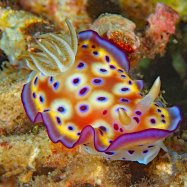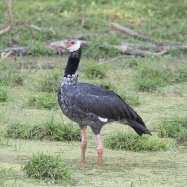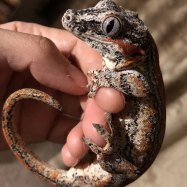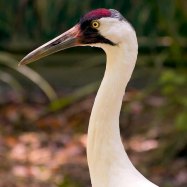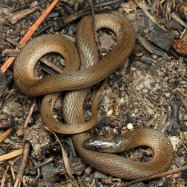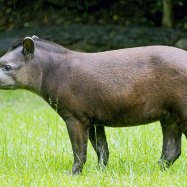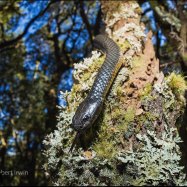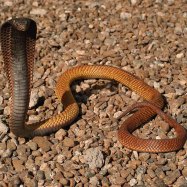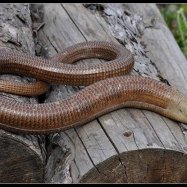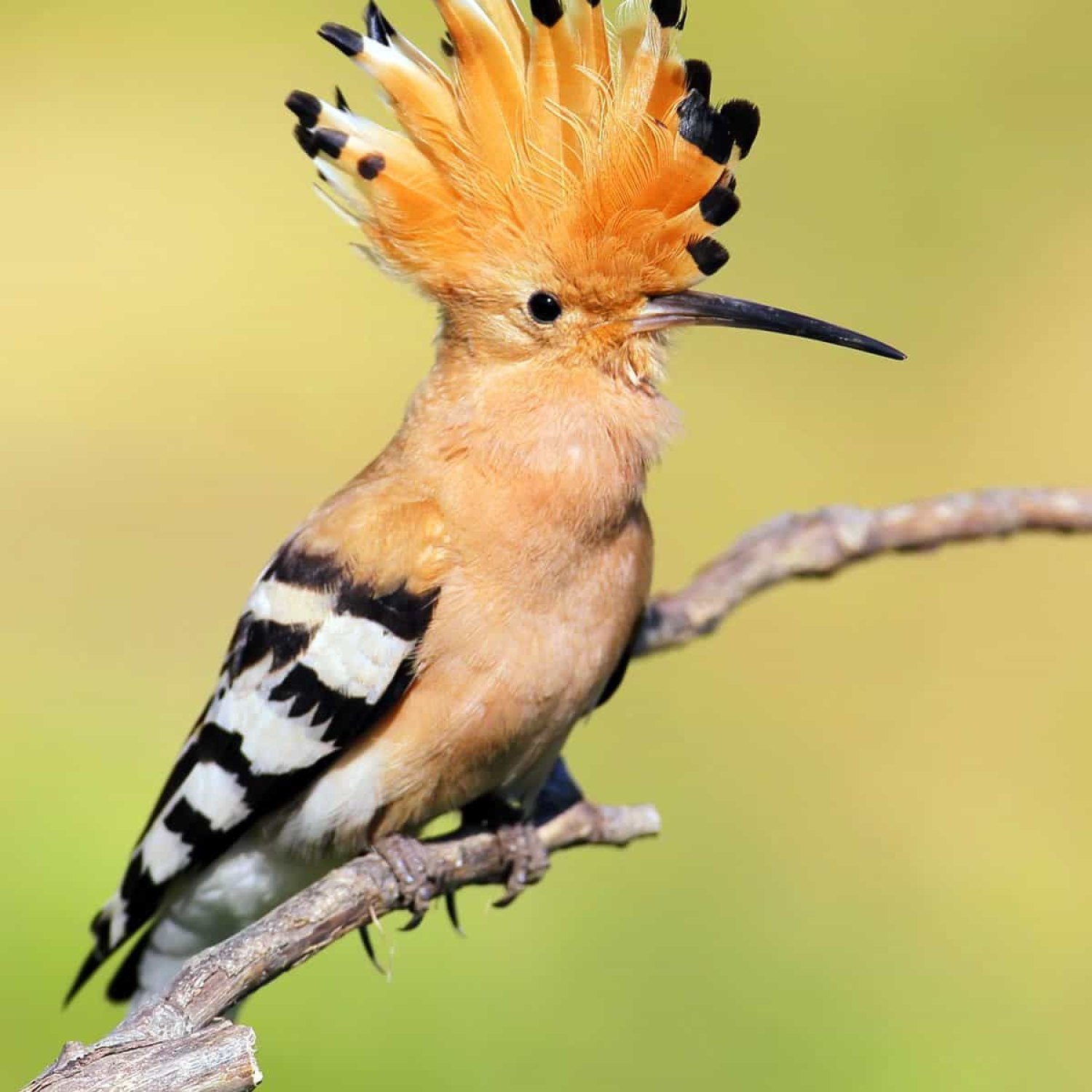
Hoopoe
25-29 cm (9.8-11.4 inches)
The hoopoe is a medium-sized bird with a distinctive long and curved bill. It can be found in a wide range of locations and belongs to the family Upupidae. With a length of 25-29 cm (9.8-11.4 inches), this colorful bird is a sight to behold. #Hoopoe #Birds #Upupidae #Wildlife
Animal Details Summary:
Common Name: Hoopoe
Kingdom: Animalia
Habitat: Open woodland, savannahs, grasslands, and agricultural fields
The Hoopoe: A Colorful and Unique Bird
The world is full of extraordinary creatures, each with its own characteristics and capabilities. From the tiny insects to the gigantic whales, the animal kingdom never ceases to amaze us. Among these diverse creations of nature, the Hoopoe stands out with its distinctive features and striking appearance.Scientifically known as Upupa epops, Hoopoe is a medium-sized bird belonging to the class Aves and the order Bucerotiformes Hoopoe. It is commonly referred to as Hoopoe and is a member of the Upupidae family. This colorful bird is found in various countries across Africa, Europe, and Asia, making its home in a wide range of locations.
The Hoopoe is a sight to behold with its unique coloration and striking body shape. It has a combination of white, black, and chestnut feathers, creating an eye-catching pattern. Its plumage is further adorned with black and white stripes on its wings and a black crest on its head. The chestnut-colored feathers on its back add a warm glow to its appearance.
Weighing around 46-89 grams and measuring 25-29 cm (9.8-11.4 inches) in length, the Hoopoe has a medium-sized and slender body Hammerhead Shark. Its most prominent feature is its long, slender, and slightly curved bill, which is used for feeding on insects. The hoopoe's body shape is a perfect adaptation for hunting and foraging in open woodlands, savannahs, grasslands, and agricultural fields, its preferred habitats.
The Hoopoe's diet consists mainly of insects, making it an insectivorous bird. It uses its long bill to probe into the ground for worms, larvae, and other small insects, which make up its primary food source. However, it has also been known to feed on fruits and seeds occasionally. The Hoopoe's feeding method is not only effective but also makes for an interesting spectacle, especially when seen up close.
With its striking appearance and unique characteristics, the Hoopoe has been a subject of fascination and admiration for centuries. The earliest known depiction of a Hoopoe was found in ancient Egyptian tombs, dating back to around 3000 BC. It is regarded as a sacred bird in many cultures, and its presence is associated with good luck, protection, and wisdom.
One such culture is the ancient Greeks who believed that the Hoopoe possessed magical powers. They believed that the bird could fly between the earth and the heavens, communicating with the gods. It was also believed to have the ability to bring rain and to warn humans of natural disasters.
Apart from its mythical status, the Hoopoe has also inspired numerous works of art and literature. It has been featured in famous poems, paintings, and even as a character in Aesop's fables. Its striking appearance and unique characteristics have made it a popular symbol in various cultures, representing beauty, intelligence, and freedom.
Despite its colorful and captivating appearance, the Hoopoe is facing threats to its survival. Habitat loss, pollution, and hunting have taken a toll on its population, leading to a decline in certain areas. The International Union for Conservation of Nature has listed the Hoopoe as a "least concern" species, but it is still important to protect and conserve its habitats.
Thankfully, efforts are being made to protect and preserve the Hoopoe and its habitats. Organizations and individuals are raising awareness about the bird's importance and advocating for its conservation. As more people learn about the Hoopoe and its unique characteristics, they become more motivated to protect it and its habitats.
The hoopoe has also become a popular attraction for birdwatchers and nature enthusiasts. Its striking appearance, interesting behavior, and widespread distribution have made it a favorite among bird lovers. In some countries, the Hoopoe has also become a tourist attraction, with guided tours and photo safaris dedicated to observing and photographing this beautiful bird in its natural habitat.
In conclusion, the Hoopoe is a unique and colorful bird that has captured the attention and admiration of humans for centuries. Its distinctive plumage, striking body shape, and interesting behavior make it stand out among other bird species. Although facing threats to its survival, the Hoopoe continues to inspire and fascinate people, reminding us of the beauty and wonder of the natural world. As we continue to learn more about this fascinating bird, let us also work towards its conservation and protection for generations to come.

Hoopoe
Animal Details Hoopoe - Scientific Name: Upupa epops
- Category: Animals H
- Scientific Name: Upupa epops
- Common Name: Hoopoe
- Kingdom: Animalia
- Phylum: Chordata
- Class: Aves
- Order: Bucerotiformes
- Family: Upupidae
- Habitat: Open woodland, savannahs, grasslands, and agricultural fields
- Feeding Method: Insectivorous
- Geographical Distribution: Africa, Europe, and Asia
- Country of Origin: Multiple countries
- Location: Wide range of locations
- Animal Coloration: Distinctive plumage with a combination of white, black, and chestnut colors
- Body Shape: Medium-sized bird with a long, slender, and slightly curved bill
- Length: 25-29 cm (9.8-11.4 inches)
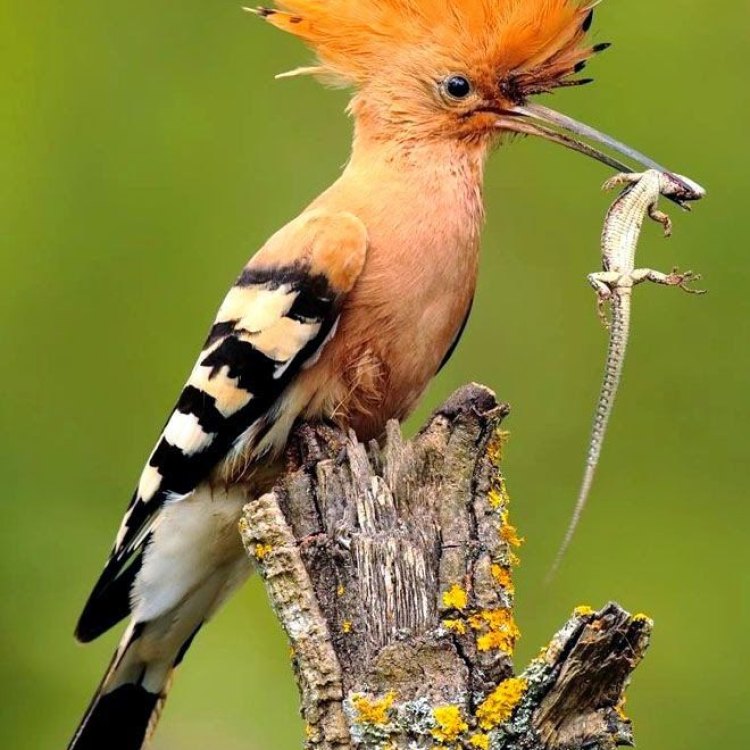
Hoopoe
- Adult Size: Small to medium-sized bird
- Average Lifespan: Up to 10 years in the wild
- Reproduction: Monogamous
- Reproductive Behavior: Nest in tree hollows or crevices
- Sound or Call: Distinctive 'hoop hoop hoop' call
- Migration Pattern: Some populations are migratory
- Social Groups: Solitary or in small groups
- Behavior: Active during the day
- Threats: Habitat loss, agricultural intensification, climate change
- Conservation Status: Least Concern (IUCN)
- Impact on Ecosystem: Important role in insect control
- Human Use: Traditionally hunted for food and feathers
- Distinctive Features: Crested head, long bill, and distinctive plumage
- Interesting Facts: Symbolic bird in many cultures and societies
- Predator: Predators include birds of prey, mammals, and snakes
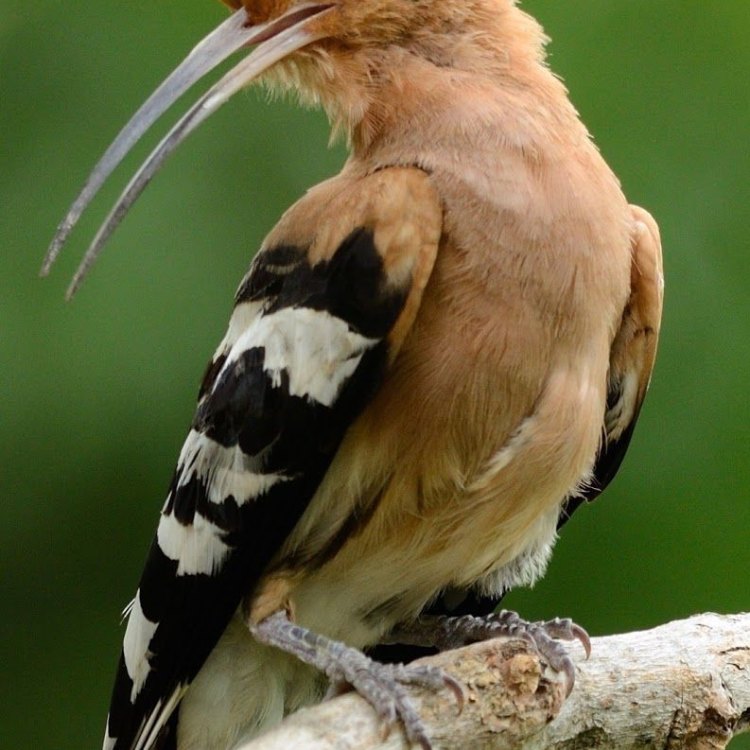
Upupa epops
The Mystical and Mysteriously Beautiful Hoopoe: A Look into its Life, Behavior, and Enduring Legacy
In the world of birds, there are many stunning and fascinating species, each with their unique set of features and behaviors. However, there is one bird that stands out from the rest - the Hoopoe. This lesser-known bird has captured the attention and curiosity of many, with its striking appearance and intriguing behaviors.Hoopoes (Upupa epops) are small to medium-sized birds, known for their distinctive crown of feathers on their head PeaceOfAnimals.Com. They have a long, thin bill, and their plumage is a beautiful blend of brown, black, and white, with striking patterns and spots. They typically reach about 11-12 inches in length and weigh around 2.5 ounces. These beautiful birds are found in a wide range, spanning from Europe to Asia, Africa, and even parts of Australia.
But what makes the Hoopoe truly unique is not just its appearance - it's their behavior and impact on the ecosystem that makes them stand out. In this article, we will delve deeper into the life of a Hoopoe, exploring its features, behavior, conservation status, and its enduring legacy.
A Fascinating Life of a Hoopoe
The Hoopoe's average lifespan can range from 6-10 years in the wild. Their lifespan is affected by various factors, such as their habitat, predators, and human interference. In captivity, they can live longer, with some recorded to have lived up to 14 years Highland Cattle.The Hoopoe is a monogamous bird, meaning they mate for life. They are solitary birds that only come together during the breeding season. During this time, they engage in elaborate courtship rituals, such as flying displays, vocalizations, and feeding each other. Their reproductive behavior is also unique, as they prefer to nest in tree hollows or crevices. This nesting behavior has evolved as a way to protect their young from predators.
The Distinctive 'Hoop Hoop Hoop' Call
While Hoopoes are not known for their vocal abilities, they do have a distinctive call. Their call is a series of 'hoop hoop hoop' sounds, which can be heard from a distance. This vocalization is mainly used for communication between mates and to mark their territory. It is also believed that they use this call as a warning to other birds and predators.The Mysterious Migration of Hoopoes
Hoopoes are primarily sedentary birds, meaning they do not undertake long-distance migrations. However, some populations of Hoopoes are migratory, and their migration patterns are still not fully understood. It is believed that they migrate to warmer regions during the winter months to avoid harsh weather conditions. Their migration routes can cover thousands of kilometers, and they can even cross the Sahara desert to reach their breeding grounds.An Exploration of Hoopoes' Social Behavior
As mentioned earlier, Hoopoes are solitary birds, only coming together during the breeding season. However, they can also be found in small groups, especially during migration or in areas where food is abundant. These social groups are not hierarchical, and they do not form long-term bonds with other Hoopoes. They are highly territorial birds and will fiercely defend their territory from other Hoopoes.A Day in the Life of a Hoopoe
Hoopoes are diurnal birds, meaning they are active during the day and rest at night. They have a diverse diet, consisting of insects, small mammals, and reptiles. These birds use their long, thin bill to probe the ground for insects and other prey. They also use their bill to dig into the soil to find insects and invertebrates.When not foraging for food, Hoopoes can be seen sunbathing, which is a vital part of their daily routine. Sunbathing helps them regulate their body temperature, clean their feathers, and remove parasites. Hoopoes also have a unique way of repelling predators - they will spread their wings and tail, revealing their bright-colored underparts, which can startle predators and make them think twice before attacking.
The Constant Threats Faced by Hoopoes
Like many other bird species, Hoopoes are facing multiple threats to their survival. The primary threat being habitat loss, mainly due to agricultural intensification and urbanization. This loss of their natural habitat has not only reduced their available nesting sites but has also decreased their food supply. Hoopoes also face the threat of climate change, as it alters their main food sources and disrupts their migration patterns.Conservation Status of Hoopoes
According to the International Union for Conservation of Nature (IUCN), Hoopoes are currently listed as 'Least Concern' in terms of conservation status. This may be due to their wide distribution and population size. However, their population is declining due to the threats mentioned above, and it is crucial to monitor and protect their habitats to ensure their survival.The Important Role of Hoopoes in the Ecosystem
Hoopoes may be small in size, but they play a crucial role in the ecosystem. As insectivores, they help control insect populations, which is essential for maintaining a healthy balance in the ecosystem. Particularly in agricultural areas, Hoopoes are seen as beneficial as they help control pests that can damage crops. They are also important pollinators, helping to spread the seeds of plants and trees, contributing to plant growth and regeneration.Hoopoes in Human Culture
Throughout history, Hoopoes have been a symbol of beauty, mystery, and even sacredness in many cultures and societies. In ancient Egyptian mythology, they were seen as symbols of the rising and setting sun, and their unique head crest was believed to be the crown of the sun god Ra. In Islamic tradition, Hoopoes are mentioned in the Quran, and their feathers are believed to have healing properties. They are also considered good luck in some cultures, and it is believed that seeing a Hoopoe is a sign of prosperity and good fortune.The Unfortunate Human Use of Hoopoes
Despite their symbolic status, Hoopoes have also been subjected to human use. Traditionally, they were hunted for food and their feathers, which were used for decorative purposes. In some countries, they are still hunted for food, and their feathers are used for traditional ceremonies and rituals. These practices, coupled with habitat loss and human disturbance, have put additional pressure on their already declining population.Predators of Hoopoes
As with any other species, Hoopoes also face predation from various sources. Their primary predators include birds of prey, such as hawks and owls, as well as mammals, like foxes and cats. Snakes are also a significant threat to Hoopoes, as they can easily enter their nesting sites and prey on their eggs and young.In Conclusion
The Hoopoe is truly a unique and remarkable bird, with its distinctive features, fascinating behavior, and lasting legacy. While they may not be as well-known as other birds, they are an essential part of our ecosystem, and their protection and conservation are crucial. It is up to us to ensure that these beautiful creatures continue to thrive and enchant us with their mysterious ways for years to come. By raising awareness and taking action to protect their habitats, we can help secure a brighter future for the mystical and mysteriously beautiful Hoopoe.
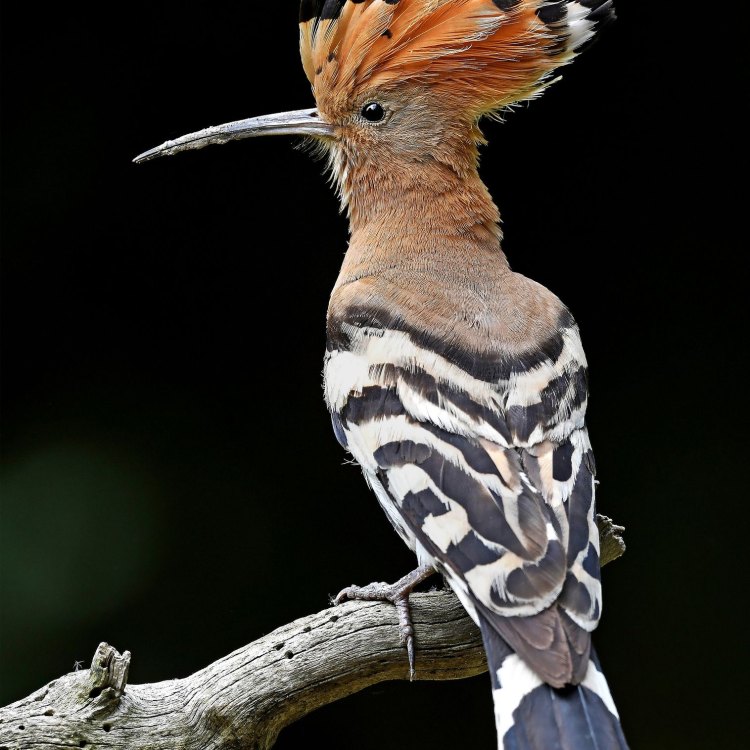
The Hoopoe: A Colorful and Unique Bird
Disclaimer: The content provided is for informational purposes only. We cannot guarantee the accuracy of the information on this page 100%. All information provided here may change without prior notice.

